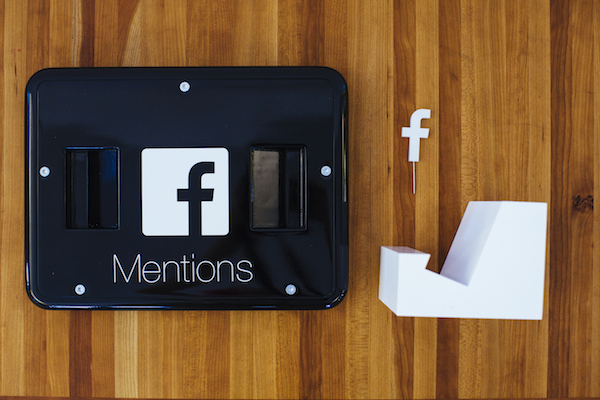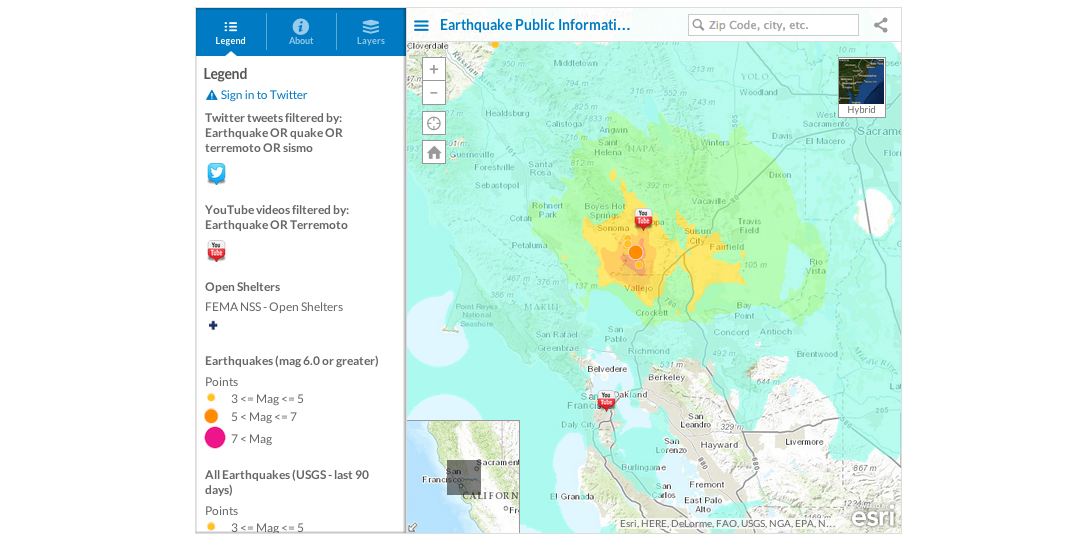For as ubiquitous as conversations about social media are, it’s hard to overstate the impact services like Twitter, Facebook, and Instagram have on users of digital products and those trying to market to them. What was once the innocent-seeming sharing of photos and funny observations is now something much larger: a swelling heap of data begging to be mined for actionable insight and ad dollars.
In a bid for the lion’s share of SM attention during last night’s Emmy Awards, Facebook and Twitter both concocted some rather complex publicity schemes. Facebook partnered with iStrategyLabs to create a chunky tablet called the “Mentions Box” that Access Hollywood anchor Billy Bush carried around the red carpet during the pre show. Bush handed the box off to celebrities who would shake it like a Magic 8-Ball to generate a random question from a Facebook user that they answered while looking into the device’s camera. (Twitter went a more scattershot route by installing a zip-line camera for overhead coverage of the event, generating their own GIFs for Twitter users to share, and enlisting the comedian Retta to live tweet.)
It’s hard to gauge the success of the FB campaign, but you can watch a handful of the celebrity responses on Access Hollywood’s Facebook page. Boston.com also made passing mention of the device: “After a fairly awkward interview with interviewer Billy Bush, Matthew McConaughey answered a fan question from the Facebook ‘Mentions Box,’ revealing his childhood idol was his brother, Pat.”
Putting an unitented cap on the competition between the two SM giants, you can see the Mentions Box looking a bit like a jilted lover in the corner of the screen as Bush reads Seth Meyers a bit of Emmy hosting advice from Ellen DeGeneres from his smartphone via Twitter.
For experience design practitioners, however, the more interesting aspect of social media’s frenzied expansion might be the way that mountains of collected data can be leveraged to create compelling experiences. Take, for example, this interactive map of last week’s earthquake in California’s Bay Area produced by Esri that shows the location of the quake and the intensity, as well as social media updates relating to the event.
Naturally there were plenty of updates to follow, as USA Today pointed out—something Inquisitr gave chilling cotext to, reporting on the hijacking of earthquake related hashtags by the terrorist organization ISIS to give their Twitter posts a wider audience. Point being, there is value (sometimes sinister) in the exposure and data that comes with social networking.
There is value (sometimes sinister) in the exposure and data that comes with social networking
“Throughout history, different types of content and the mediums used to capture and present it have dominated the culture,” says Quinton Alsbury, Co-Founder and President of Product Innovation at Roambi (the winner of the Design for Experience award for Bringing Order to Big Data). “We believe that data is quickly becoming the primary content of the 21st century, so there is a huge opportunity to create the tools and the medium to help people interact with it.”
How do you see social media playing into conversations surrounding experience design and data visualization? How are you working to innovate or improve the way users engage with social media and the data it produces? We’d love to hear from you.










